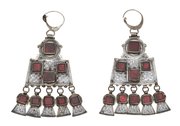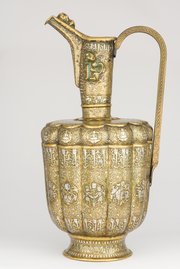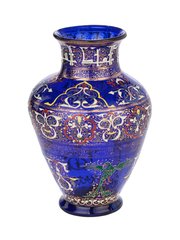
Glass Floor Tile
Museum of Islamic Art
- Title:
- Glass Floor Tile
- Production place:
- Iraq
- Date:
- 836 - 842
- Period:
- Abbasid
- Title:
- Glass Floor Tile
- Production place:
- Iraq
- Date:
- 836 - 842
- Period:
- Abbasid
- Material:
- Glass
- Technique:
- Mosaic, Casting
- Dimensions:
- 17 × 16 × 4.5 cm
This tile shows a thick layer of green translucent glass combined with a thinner layer of multicoloured mosaic glass. Due to its composition, this tile may be the only known example of a floor decoration in Samarra. Known in Egypt in the 2nd millennium BCE, then in Rome and Alexandria in the 2nd century BCE, the mosaic or millefiori technique (‘thousand flowers’) reappears in Samarra, capital of the Abbasid caliphate between 221 and 279 AH / 836-892 CE. The glass found in Samarra, some of which in the palace of al-Jawsaq al-Khaqani, was used in various forms and was associated with painted stucco panels, lustred ceramic tiles and paintings, in a complex decorative cycle. The descriptions of Samarra's architecture in Abbasid poetry give great importance to height and brightness, partially related to the use of materials like glass or lustreware. Palatial decorations suggest the construction of an image, designed to dazzle the visitor, and imply the idea of spatial hierarchy ordering official ceremonies, during which the audience hall would be accessible to a selection of guests.



